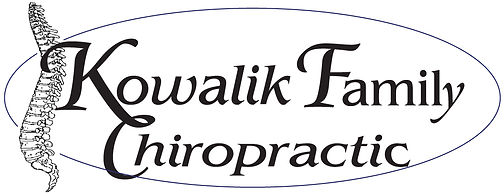What Chronic Headaches And Dizziness Could Really Mean
- support54705
- Jan 9, 2023
- 3 min read
Updated: Mar 7, 2023

Headaches and migraines. Dizziness. Sinus pressure. Facial, neck, and ear pain. Many people live with these recurring nuisances and simply try to manage symptoms when they flare up, brushing them off as pesky, yet unavoidable, intruders— but don’t be too quick to dismiss them.
Though many of these unwelcome symptoms may initially not sound like cause for too much alarm, they could in fact be indicators of a bigger underlying issue: cervicocranial syndrome.
If you’re experiencing the symptoms of cervicocranial syndrome, don’t stress! While the name is a mouthful, cervicocranial syndrome can be treated very effectively with simple, non-invasive treatment.
Read on to learn more about cervicocranial syndrome, what causes it, as well as the best approaches to treatment.
What Is Cervicocranial Syndrome?
Cervicocranial syndrome (also known as CCS) is caused by instability and misalignment in the cervical spine– or, as most of us call it, the neck. Misalignments in the neck can increase pressure, interfere with normal sinus activity, and pinch nerves.
The symptoms of CCS are varied, and those who suffer from it can experience just one or a myriad of the potential symptoms, which is partially why it can be so difficult to diagnose! However, because the neck is so close to your head and the brain, when the cervical spine becomes misaligned, it tends to affect the area above the shoulders most distinctly. The most commonly experienced symptoms are: headaches and migraines, face, ear, and neck pain, sinus pressure, ringing in the ears, and dizziness.
Causes of Cervicocranial Syndrome
The causes of CCS can be both sudden and developed over time. In some instances, a traumatic accident, like a car crash or whiplash, can be the instigator of instability issues in the neck. Other times, simple wear and tear from poor posture can bring on the onset of this syndrome. Arthritis has also been shown to cause CCS in some cases.
Effective Exercises To Treat CCS
The good news in all of this is the outlook for CCS treatment is overwhelmingly positive with the proper care.
It’s worth mentioning that if you believe you may be experiencing cervicocranial syndrome, it is always best to consult with a medical professional. By working with a professional, you ensure a proper diagnosis and treatment plan tailored specifically for your needs– not to mention, the security that no other underlying issues are at play. Neck injuries shouldn’t be taken lightly!
At your doctor’s discretion, gentle neck exercises can help to bring mobility and strength to the area. The following are great starter-exercises for additional at-home care.
Neck Rotations
These are about as simple as they sound! Sit upright in a chair with a neutral posture and rotate your neck to look over your shoulder in one direction slowly, until you feel a gentle stretch. Hold this position for 1-2 seconds before gently bringing your head back to the center. Repeat on each side 5-10 times, or as tolerated.
Head Tilts
Again, begin this exercise by sitting in a neutral, relaxed position. Keep your gaze forward while slowly tilting your head down toward your shoulder, using that gentle stretching sensation as your stopping point. Hold this end range position for 1-2 seconds before slowly returning your head back to the center. Repeat on each side 5-10 times, or as tolerated.
Neck Bends
Stay in your seated position for this exercise. Slowly lower your head toward your chest, tucking your chin as you go. Gently lift back up and return your head to neutral. Repeat 5 times.
Chiropractic Support For Better Neck Health
In your journey back to full health, chiropractic care is a safe and natural treatment regime for CCS. A doctor of chiropractic specializes in spine and neck care and can be an incredible asset in your healing process and in regaining neck health.
Chiropractic care utilizes gentle adjustments of the spine to realign your body, decrease pressure and inflammation, decrease nerve irritation, and ultimately allow for healing to take place. These adjustments are so effective in treating cervicocranial syndrome in particular because they address the misalignments in your neck that cause the myriad of uncomfortable symptoms, getting to the root of the problem.
Additionally, your practitioner may recommend other exercises or modalities to perform outside of appointment times, in order to help expedite your healing process along.
It’s time to take back control of your health.
Schedule an appointment online or call (949) 380-8883.
This article is for informational purposes only and is not a substitute for in-person advice or care from a medical professional.

.jpg)



Comments